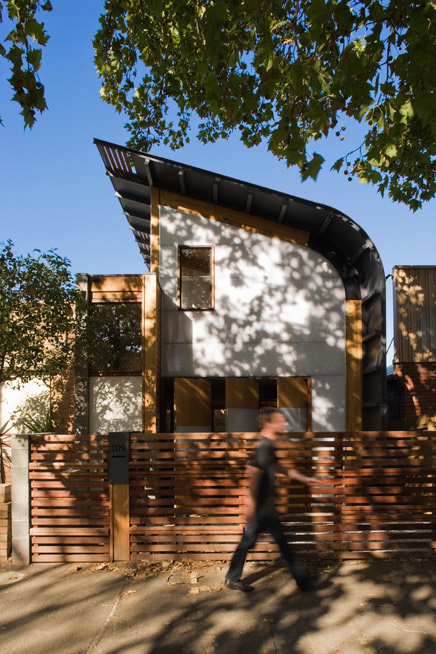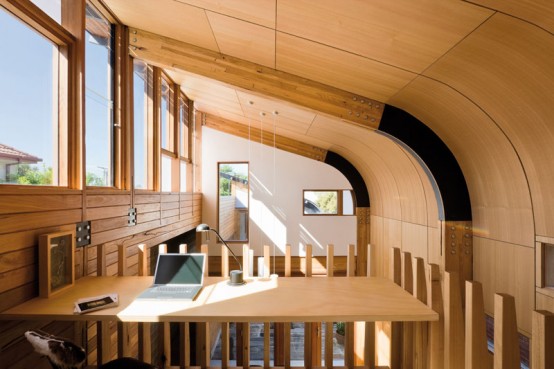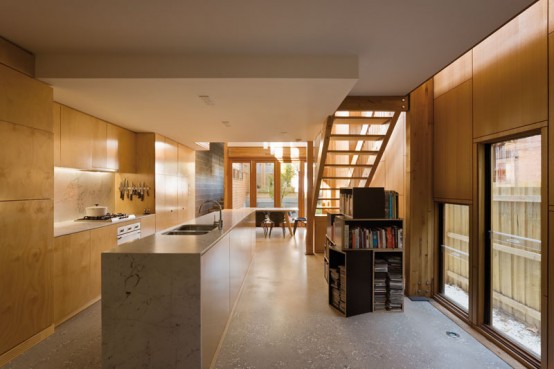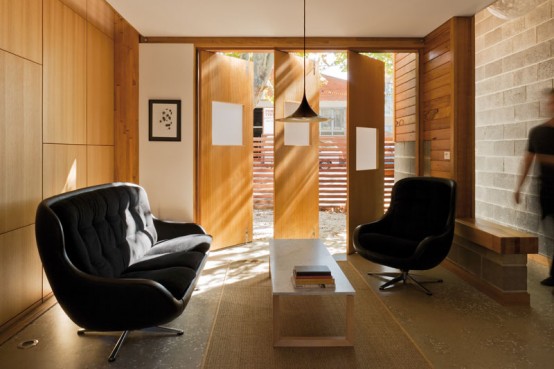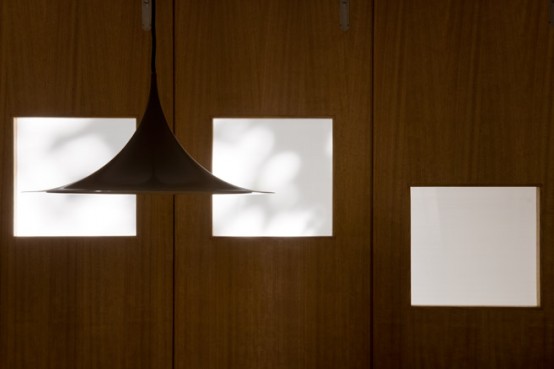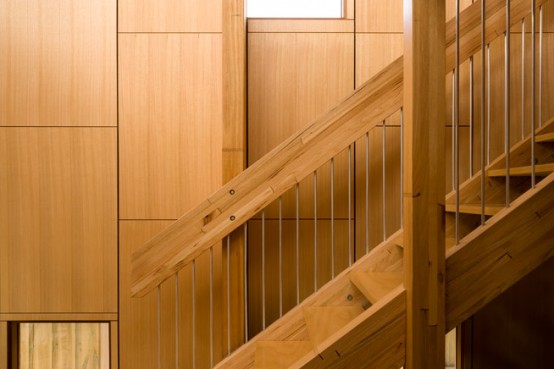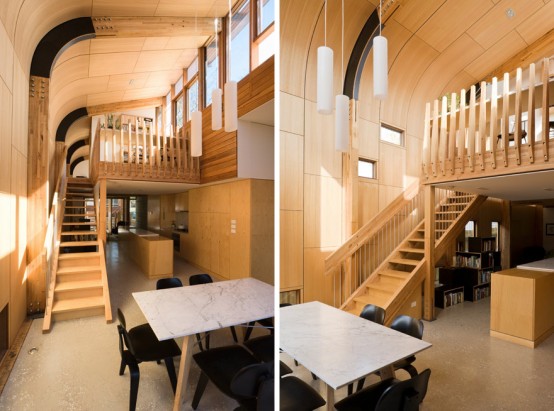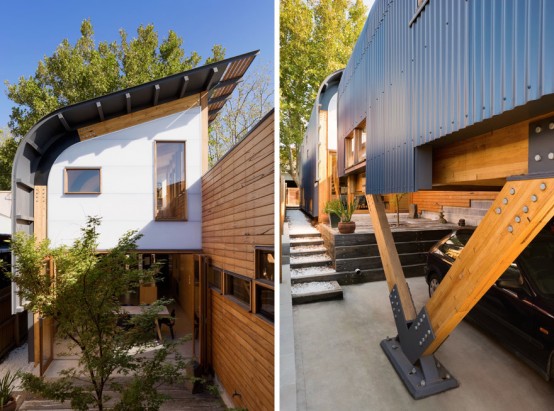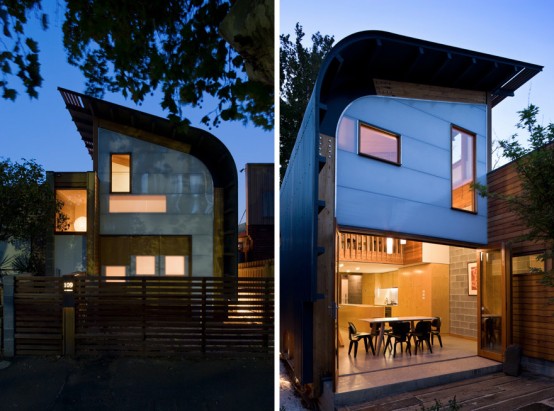







Project name: Villa Nyberg
Client: Emrahus & the Nyberg family
Object: prefabricated passive house villa
Size: 156sqm.
Stage: built
Team: Joakim Kaminsky, Fredrik Kjellgren, Oscar Arnklitt, Daniel Andersson, Corina Bermúdez
PASSIVE HOUSES AS TYPE HOUSES
Kjellgren Kaminsky has produced Swedens first series of passive houses sold as type houses in collaboration with Emrahus, our goal is to make this environmentally friendly building technique available for all. Villa Nyberg is the first one to get built. The villa has been customized for the Nyberg family and is situated in Borlänge, central Sweden.
THE PASSIVE HOUSE CONCEPT
Passive houses are extremely well-insulated buildings that are largely heated by the energy already present in the building - people and our household equipment generate a lot of energy. Our energy simulations show that this villa will have an energy consumption for heating of only 25 kWh/m²year.
SWEDISH RECORD IN AIRTIGHTNESS
To reduce heatloss airtightness is n important feature of a passivehouse. When we tested the airtightness of Villa Nyberg in a blowdoortest we got apleasent suprise, a new Swedish record! The result was 0,038 l/sm² at 50 Pa. The Swedish passive house standard is 0,3 and the previous record was 0,07.
DESIGN PRINCIPLES
The villa is situated by a lake in a fur forest in central Sweden. The living room and kitchen open up towards the views of the lake, the more private areas such as the bedrooms and bathrooms are situated on the other side of the house with smaller windows overlooking the forest. The round shape of the villa eliminates coldbridges and reduces the enclosing wallarea of the house. It also effects the way you live in the house, during the day one will move from room to room around the building experiencing different views and daylight conditions.
LIVING IN VILLA NYBERG
The autumn is closing in, but its still warm in the sun. Its Sunday morning and I’m reading the newspaper in the kitchen. From here I can see almost the whole house. The kitchen and the living room form one big open room. From there two corridors running along the atrium connects it with the bedrooms. If I look into the atrium I can see the doors to the bedrooms on the other side, there our kids are still fast asleep, they stayed up a bit too long yesterday watching movies.
Source : kjellgrenkaminsky.se
Client: Emrahus & the Nyberg family
Object: prefabricated passive house villa
Size: 156sqm.
Stage: built
Team: Joakim Kaminsky, Fredrik Kjellgren, Oscar Arnklitt, Daniel Andersson, Corina Bermúdez
PASSIVE HOUSES AS TYPE HOUSES
Kjellgren Kaminsky has produced Swedens first series of passive houses sold as type houses in collaboration with Emrahus, our goal is to make this environmentally friendly building technique available for all. Villa Nyberg is the first one to get built. The villa has been customized for the Nyberg family and is situated in Borlänge, central Sweden.
THE PASSIVE HOUSE CONCEPT
Passive houses are extremely well-insulated buildings that are largely heated by the energy already present in the building - people and our household equipment generate a lot of energy. Our energy simulations show that this villa will have an energy consumption for heating of only 25 kWh/m²year.
SWEDISH RECORD IN AIRTIGHTNESS
To reduce heatloss airtightness is n important feature of a passivehouse. When we tested the airtightness of Villa Nyberg in a blowdoortest we got apleasent suprise, a new Swedish record! The result was 0,038 l/sm² at 50 Pa. The Swedish passive house standard is 0,3 and the previous record was 0,07.
DESIGN PRINCIPLES
The villa is situated by a lake in a fur forest in central Sweden. The living room and kitchen open up towards the views of the lake, the more private areas such as the bedrooms and bathrooms are situated on the other side of the house with smaller windows overlooking the forest. The round shape of the villa eliminates coldbridges and reduces the enclosing wallarea of the house. It also effects the way you live in the house, during the day one will move from room to room around the building experiencing different views and daylight conditions.
LIVING IN VILLA NYBERG
The autumn is closing in, but its still warm in the sun. Its Sunday morning and I’m reading the newspaper in the kitchen. From here I can see almost the whole house. The kitchen and the living room form one big open room. From there two corridors running along the atrium connects it with the bedrooms. If I look into the atrium I can see the doors to the bedrooms on the other side, there our kids are still fast asleep, they stayed up a bit too long yesterday watching movies.
Source : kjellgrenkaminsky.se
